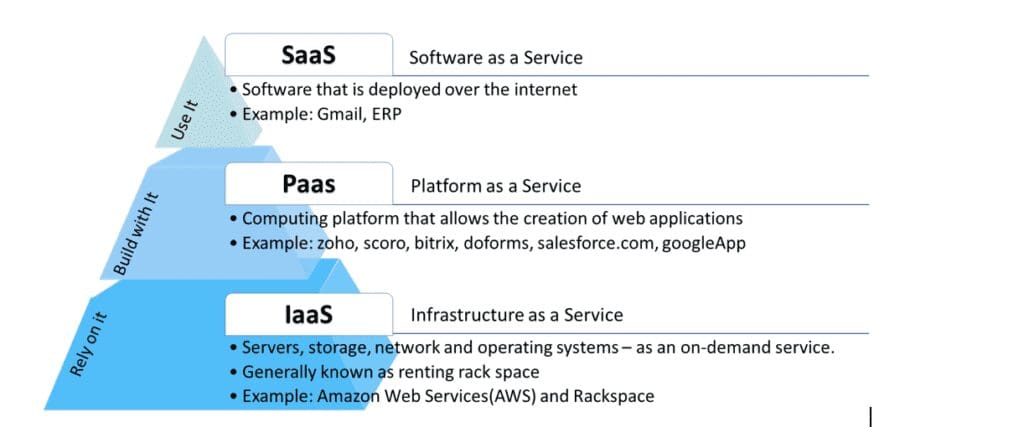Is the Cloud adapted for NDT? This is a recurring question that people in the NDT industry are asking themselves. NDT has its own specificity. Technique and technologies and used to achieve this operation are complex: liquid penetrant, ultrasonic, magnetic particle, eddy current, and more.
No matter which technology is used, inspections data acquired will have to be pushed on a company server. Regardless of the process used to transfer data on the server (automated or manual), the data will end on a private server or a cloud solution. From there, a question might be asked: Cloud can truly simplify the file management, but is any cloud solution adapted for the NDT?
Example: Dropbox may not full fill, right out of the box for our market? The presentation will highlight different avenues about the three fundamental service models of cloud computing IaaS (Infrastructure as a Software), PaaS (Platform as a Software) and SaaS (Software as a Service); and highlights NDT critical requirements (constraints and needs). Then a recap of different levels of Cloud services (component, option, security, etc.) will be defined.
Remember that a private and a public server are 2 possible avenues. NDT was an early user of the private server, even before it was called a Cloud. Overall, the main idea is to optimize the operation process to reduce OPEX “Operational Expenses” to increase availability, traceability, and accuracy of data.
The three principal Cloud computing services are the IaaS, PaaS and the SaaS.

IaaS - Infrastructure as a Service
The Infrastructure as a Service is a hardware pool service virtualized for his users. With virtual server space, network connection, bandwidth, IP address, and load balancer, the user can access the computing infrastructure from anywhere only with an internet connection.
This kind of solution is usually used by networker architect, IaaS gives them the opportunity to control the O/S and let them more flexibility to scale it to their needs, without having to invest in big infrastructure. IaaS is easily scalable and includes automation of administrative tasks, desktop virtualization, and policy-based services.
Users don’t own the server so it might be difficult for the management and monitoring system, but it gives them data security due to the fact that they are host by a physical data center. A positive point about the IaaS is that you won’t have any single point failure due to his multitude of hardware resources.
IaaS is frequently used for business’s infrastructure, cloud hosting or virtual data centers.
Example of IaaS:
- Vmware
- Openstack
- Chef
- Windows azure
Possible costing models: utility style costing mode or license payment
PaaS - Platform as a Service
The Platform as a Services is easier to manage and modify than IaaS, but it is less flexible due to the fact that users don’t have any control of the O/S. PaaS allows users to develop application and services over the internet. The expertise of a networker developer to the fact that users don’t have any control on the O/S. PaaS allows users to develop application and services over the internet. The expertise of a networker developer won’t be necessary to develop PaaS but an application developer will be needed.
PaaS included features are: operating system, server-side scripting environment, database management system, server software, support, storage, network access, tools for design and development, hosting.
Valuable advantages of PaaS are that the customer doesn’t have to invest in infrastructure, it is easy to manage and develop even for non-expert developer. Usually, you just have to scroll up the feature wanted. It is flexible and it could be easily adapted. Like it requires only an internet connection and a browser, people from anywhere can work together on the same application. It also includes data security, backup, and recovery system.
Example of PaaS:
- Heroku
- Windows azure
- Cloud Foundry
Possible costing models: initial basis subscription fee or license payment.
SaaS - Software as a Service
Software as a Service is generally used to manage personal or run a CRM. It is working on any enabled devices and there is no license payment. The pricing system is based on subscription.
SaaS is developed for final user, this is why everything is managed by the vendor. The major problem with SaaS for NDT is that you must make an agreement with the providers to protect confidential data, and once you are using a SaaS, informatic migration might be complicated. Often, businesses are obliged to continue with their supplier.
Example of SaaS:
- Workday
- Office
- Gmail
Possible costing model: subscription fee only, no possibility to have a license payment option.
Difference Between 3 Types of Cloud Solutions
To better understand the difference between those 3 types of cloud solutions. The IaaS is generally used by networker architects, PaaS by an application developer, and SaaS by the end-user. In IaaS, the user will have to manage the application, data and O/S and the supplier will take care of virtualization, server, storage, and networking. In PaaS, the O/S will be taken in charge by the supplier. Finally, in SaaS, the user will not have to manage anything, the supplier will take all those components in charge. Less control you have on your O/S charge. Less control you have on your O/S less control you have the possibility to have a private or a public server. on your data security. Regardless of which kind of cloud you want to implement IaaS, PaaS or a SaaS, you always have the possibility to have a private or a public server.
Overall, the main idea is to optimize the operation process to reduce OPEX and to increase availability and accuracy of data.
The objective to opt for a cloud solution is to easily access your data and simplify file management or even better and automate it. Secured solutions exist to simplify your work and some are compatible with any kind of Cloud or private server.
When you opt for a Cloud you should think about a solution that will simplify the work of your team and which will be easy to adapt and access. So in consideration of those criteria, there is not only one good solution, the good solution for you is the one that you will choose. Each company has its own reality. But, before choosing or developing a solution that will be your server, you must analyze keenly your needs and if possible, work with an expert team to help you get the greatest solution for you. In NDT, we often see companies use Dropbox, Box or WorkPad.
It is important to be conscious of their advantages and limitations. The Cloud or the private solution that will impact your team, their work and the efficiency of your company. This article should help you choose a Cloud that will facilitate your work.









